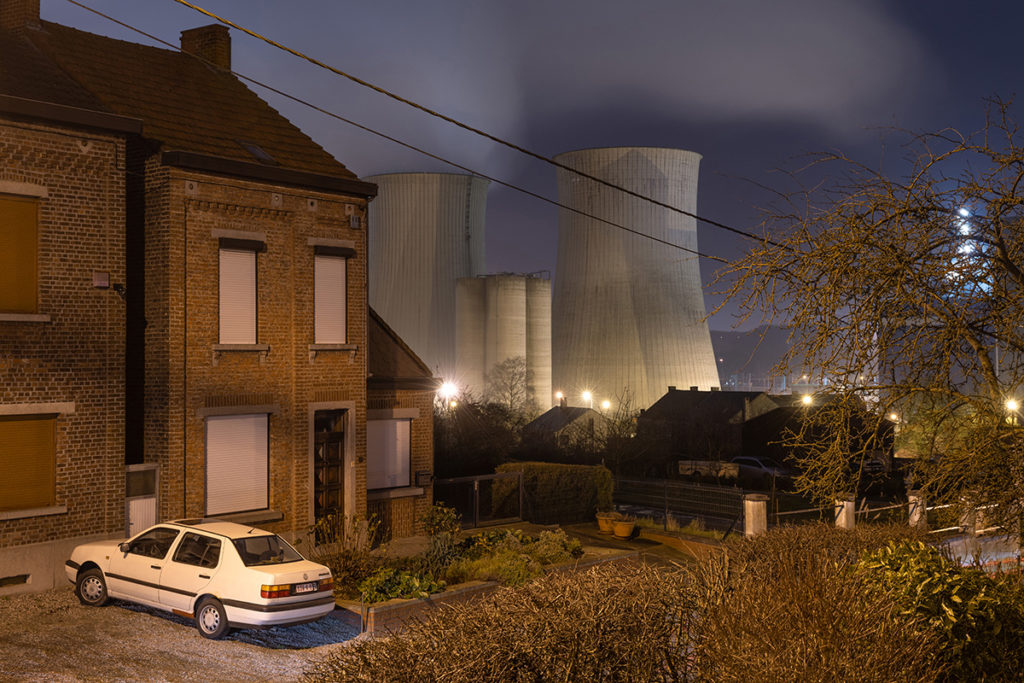
David Schalliol is an associate professor of sociology at St. Olaf College, the author of Isolated Building Studies, and coauthor of The City Creative with Michael H. Carriere. His photography has been internationally featured and exhibited; this photo comes from an ongoing residency with BPS22, the art museum of Belgium’s Hainaut Province. —Jayne Ross
As a photographer and sociologist who has lived in communities affected by the collapse of steel and grain production, I am especially interested in understanding places that are physically and socially defined by a now-absent industry. In 2016, I was invited by the Centre Régional de la Photographie Hauts-de-France and Chicago’s Hyde Park Art Center to start a long-term project in the Hauts-de-France region, which is my family’s ancestral home. The area is a part of France so connected with coal production in the 19th and 20th centuries that its remaining mining infrastructure is now a UNESCO World Heritage cultural landscape. Today, coal is no longer mined in France, and the region has seen profound changes.
The geology that made the north of France so important for mining doesn’t just stop at the country’s border with Belgium, so in 2020, I started working with BPS22 to connect experiences on both sides. This photograph was made in Charleroi, once the center of Belgium’s mining industry and still an important regional hub. Charleroi’s massive energy needs and the presence of abundant coal meant that coal-fired power plants were squeezed between the expanding cityscape and existing waterways. Now, because of deindustrialization and increasing awareness of coal’s environmental ramifications, power plants like this one no longer use coal to produce energy but remain a part of their surroundings.
This project is an example of my favorite kind of work: an in-depth, long-term exploration of how a landscape can reveal important social issues. In this case, I hope that juxtaposing two disparate uses of Charleroi’s landscape prompts questions about how new development can resolve long-standing tensions between industrial and residential uses while orienting us toward a more equitable and sustainable future.

